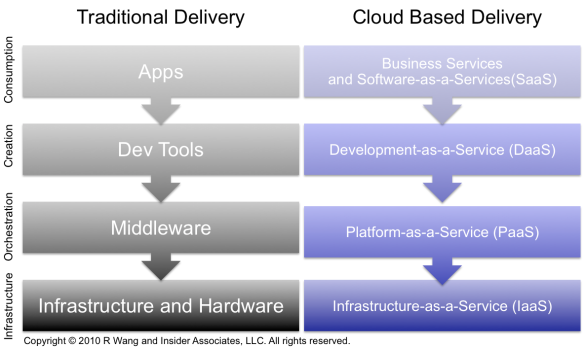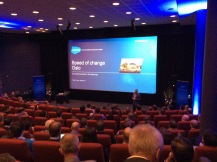The whole is more than the sum of its parts (Aristotle). As a marketing leader, you don’t want to just make an impression, you want to show your impact.
Let’s cut to the chase: as Chief Marketing Officer you need metrics and results. Otherwise, there is no glory – and no budget or resources for you to help your company succeed. Setting KPIs is today’s mantra for everything you do. But agreeing on which KPIs are relevant is not that straightforward.
Despite our focus on being data driven and building our marketing plan on data rather than assumptions, aligning with sales objectives and corporate strategy – what we perceive as a successful result may not resonate among our peers. Our KPIs must be based on a joint perception of what constitutes success. Believe me, in large organizations, CMO-life isn’t straightforward:

It’s analogous to the story of the three blind men and the elephant in which each blind man touched a different part of the elephant (trunk, leg and tail) and thus had a different perception of it. (Debbie Quagish, The Pedowitz Group)

Illustration by Frits Ahlefeldt “The Hiking Artist Project”
So, how can you fulfill all these expectations while controlling your urge to count leads, conversion rates, clicks, opens, and number of attendees at your events?
I am guessing, that this is how you judge your success as a marketing leader today. But other stake holders expect different measures, and nothing is more frustrating for a marketing leader than happily reporting marketing results and then being ignored/unappreciated by the organization.
The dilemma is well known – there are countless “How To Measure Marketing Success” do-it-yourself books, articles, videos and blogs out there for you to sample. But from checking 10 different sources, none of these provided an answer to all of the above. Most – and that makes sense – are focused on the expectations of Sales in order to support creating revenue. But remember, Sales is measured on short term goals, and your CFO wanted your plan in place 12-18 months before it is supposed to be executed.
The ultimate CMO Dashboard
When convincing CFOs, CEOs and board rooms, the trick used to be to show complex pivot tables with an abundance of data that hopefully illustrated achieving your KPIs. But times have changed, and speed is the new currency of business.
You only have seven seconds to make an impression.
But knowing that your counterpart only has a slightly higher attention span than a goldfish, you have about eight seconds to make an impact.
So, skip the pivots and show The Ultimate CMO Dashboard:

You know you want it. (Source: Musqot Marketing Technology)
It has all the components you need in order to assemble the various parts of the elephant. The dashboard reports on budget, progress according to plan, activities planned and status, and much more. You can slice it the way you want. The application is called Marketing Performance Management (MPM) and is developed by one of Sweden’s exciting startups, Musqot Marketing Technology.
The benefit of an overview like this is that it takes only 8 seconds to process during a meeting where the CMO holds the last spot and only has 12 minutes left from the 20 minutes she was allocated on the agenda.
Another clever aspect is the fact that it provides a holistic view of marketing execution,  based on real time data. For example, the planning section is built upon the familiar concept of Gantt charts while in the same view you have the updated results from the various activities displayed at the bottom – taking Gantt to the next level so to speak.
based on real time data. For example, the planning section is built upon the familiar concept of Gantt charts while in the same view you have the updated results from the various activities displayed at the bottom – taking Gantt to the next level so to speak.
Musqot’s current tagline is “Control Will Unleash Creativity” and speaks to exactly what marketing is all about in the enterprise: being able to creatively support the strategic objectives of a company while maintaining control over planning, budgeting and execution. So, basically you are combining the parts of the elephant into … a whole elephant … rather than a snake (the trunk), a spear (the tusks), a piece of rope (the tail) and a leathery sheet (the ears).
There is a catch
If you want to visualize data driven planning, progress and results, you need to have the data available in a consolidated environment where the various sources are seamlessly integrated. Despite being the ultimate tool for marketing finance and performance management for the enterprise, you will unfortunately need to reside and consolidate everything on the Salesforce platform. It’s not an easy nut to crack, but to work with data means that the data needs to be compatible regardless of its source. Especially if you – as in this case – have real time visualization and insights to gain.
So, to reap the benefits of the ultimate CMO dashboard, you would need your data to be sourced from and consolidated on the Salesforce platform. Which is why Musqot is a featured application available on the Salesforce AppExchange.
But if you measure – and show – marketing success in a format that ties it all together like this, where activities are directly associated with sales success, the sales manager may just stop asking you to organize huge events and request more long time planning and engaging campaigns that are timely based upon the actual needs of the future customer. So now both Sales and Finance recognize your marketing success.
By consolidating your data, your activities and your results on one platform that is integrated well into the company’s IT backend, the CIO will recognize the success of your marketing activities.



























 traditional SpeakerSelfie – and I am still slightly shaken by the encounter.
traditional SpeakerSelfie – and I am still slightly shaken by the encounter.







